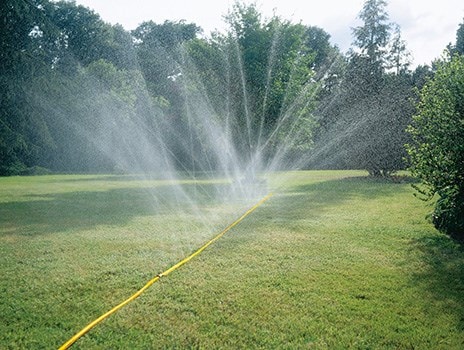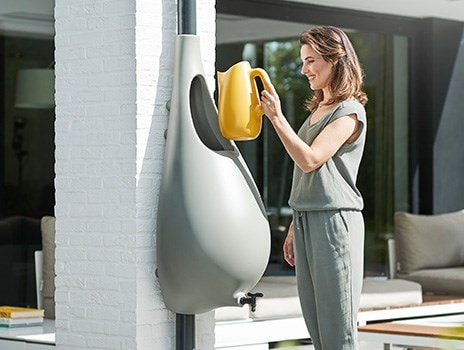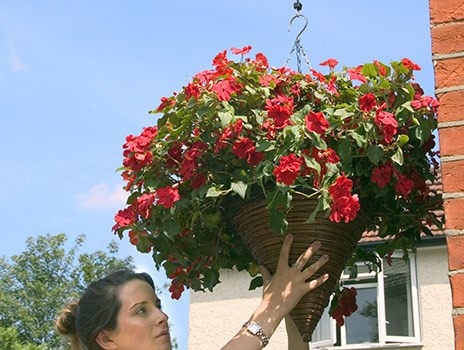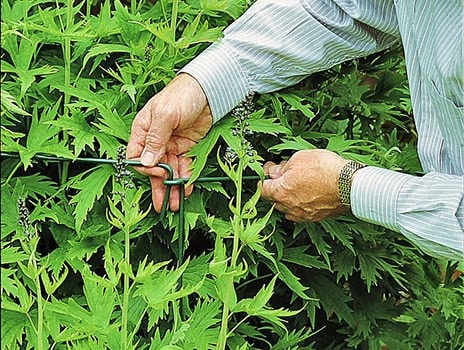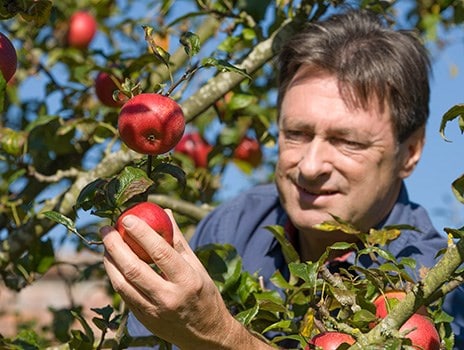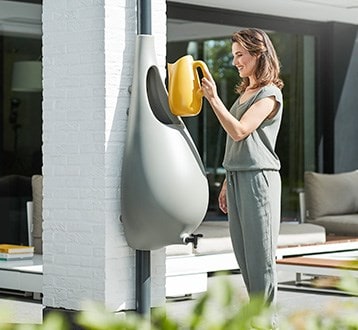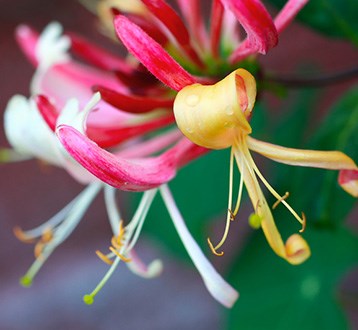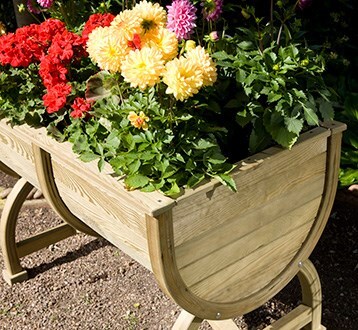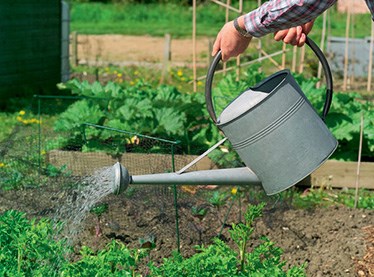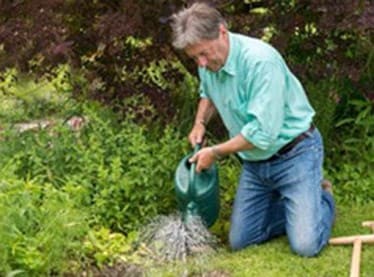The water cycle
No matter how much precipitation we have during the winter months (and it was a lot this year!), it will only take a few consecutive weeks, without rain, for the dreaded words ‘hosepipe ban’ to be hitting the headlines.
Why is it that gardeners get the blame for water shortages? In fact, there is plenty of it to go round, if only it was managed properly. If you feel as revolutionary as me, there is a lot you can do to limit your dependence on mains-water suppliers.
First, reduce your consumption (and your bills) by making your garden less thirsty. Grow more drought-tolerant plants and garden with water-saving in mind by using mulches and developing shady grottos. Save as much water as you can, by collecting rainwater in waterbutts and recycling ‘grey water’ from the house. Finally, reduce the amount of water you apply by watering only the plants that really need it and limit water losses through evaporation by watering in the evening or after dark.
Grow more drought-tolerant plants and garden with water-saving in mind by using mulches and developing shady grottos. Save as much water as you can, by collecting rainwater in waterbutts and recycling ‘grey water’ from the house
Install a water butt
In my garden I have several butts collecting water from the greenhouse, shed and conservatory. You can get wall-mounted water butts, if space is at a premium, and fancy ones that are the spitting-image of terracotta urns and oak whisky barrels – ideal if the butt has to be placed in a prominent position.
All are easy to attach to a downpipe using an overflow kit that prevents too much water flowing into the butt, and you can link several water butts together using a connector kit if you are looking for more serious water storage.
Spruce up your patio
If the summer is kind, I’ll be spending many happy hours relaxing and entertaining on the patio. So I always make a point of giving it a bit of a facelift this month.
You can now plant up containers and hanging baskets with tender bedding as well as more exotic beauties without fear. Often the most effective displays are based on a simple theme. Using just one style of pot, for example, or repeating a similar planting scheme in a range of pots. Some flowering plants, such as lilies, will steal the show, but you could also try bold foliage plants, such as Indian shot, hosta and a banana plant for a striking centerpiece.
A pot with a colour-coordinated planting also makes a big impression.
Summer feeds
Most plants don’t need an additional feed during the summer months, but shrubs, such as roses, that put a great deal of energy into flowering, are worth feeding after deadheading. This will encourage an even more impressive second flush. Use a general-purpose or special rose fertiliser for rose borders.
Container roses should be fed, once a fortnight, using a high-potash fertiliser, such as tomato feed. But do not feed any later than mid-summer since this will encourage soft, new growth towards the end of the season that will be vulnerable to frost and winter damage.
In fact, all flowering container plants will need regular feeding if you did not add a slow-release fertilizer, at planting time, designed to last all season.
Staking & tying
If you didn’t get round to staking your herbaceous plants, there is still time, but you will have to take extra care not to damage developing shoots. Those plants that put on a late show, such as chrysanthemums, dahlias, heleniums and Michaelmas daisies are particularly worth doing now.
All-purpose linking stakes are useful for clump-forming flowers, while individual rocket flowers, such as delphiniums can be kept upright with individual stakes and soft ties.
It’s also worth checking over climbers to see if you can secure new growth to supports, and in the fruit garden, tie in any wayward summer raspberries and other rampant canes.
Social climbers
One of the great things about climbers is that they are very amenable. Put two different climbers together and you’ll nearly always achieve twice the impact, or double the period of interest.
Clematis combine well with one-another if you take care with the colour combination, but it is worth pairing varieties from the same pruning group, so that they are easier to look after. For example, group 3 clematis includes the deep purple C. jackmanii that complements the ruffled, pure white flowers of 'Prince George' beautifully, to give a summer-long show. Clematis also make good bedfellows for roses and honeysuckles as well as foliage climbers, such as variegated ivies, like Hedera helix 'Goldchild', and Virginia creeper (Parthenocissus quinquefolia).
In a garden I visited recently, the purple velvet ‘Warszawska Nike' was paired with the golden-hop (Humulus lupulus ‘Aureus’) to great effect.
Nearly all climbers need a sturdy support. Against a wall or fence, this can be provided by a trellis or a series of wires held taught between vine-eyes. To see climbers at their best, however, a free-standing support, such as a decorative arch is best. You can use them to frame a view, garden feature, such as a statue or garden entrance. Even within a border, you could train a well-behaved climbing pair over an obelisk or pyramid to add height and provide a dramatic point of interest.
Monthly checklist
- Divide overcrowded bearded irises and primulas
- Tackle weeds before they set seed
- Take cuttings from pinks
- Earth-up maincrop potatoes
- Thin apples and pears after the ‘June drop’
- Plant out Brussels sprouts and cabbages
- Thin direct-sown vegetables
- Make a second sowing of runner beans
- Plant tender vegetables
- Plant a windowbox of herbs
- Keep the greenhouse cool
- Pinch out tips of broad beans to prevent blackfly

